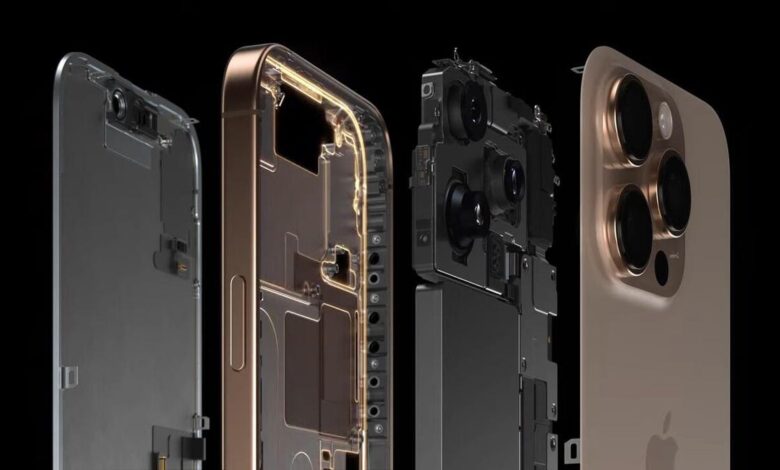The iPhone 16 Pro has improved cooling — but it might still get hotter than you expect


The iPhone 16 Pro features a new chassis made from 100% recycled aluminum, bonded to the phone’s titanium frame using solid-state diffusion technology,
Apple
Apple has been experiencing occasional overheating issues with the current iPhone 15, starting with heat problem while chargingContinuously occurs intermittently throughout the life of the equipment.
The problem — or at least part of the problem — is that Apple didn’t build the iPhone 15 with an efficient way to channel the heat generated by the chip into the case. While it works most of the time, as evidenced by the tens of millions of iPhone 15s sold over the past year, it’s clear that Apple needs to address this issue as the workload increases exponentially with each new release.
Also: Comparing Each iPhone 16 Model: Which New iPhone Should You Buy?
Today, Apple provided insight into the new thermal management method implemented in the iPhone 16 Pro and Pro Max phones.
First is a new chassis made from 100% recycled aluminum, bonded to the phone’s titanium frame using solid-state diffusion technology. This method bonds the two materials together by diffusing one material into the other, allowing heat to flow from the mainboard to the chassis and out the titanium frame as efficiently as possible.
Graphite-coated aluminum construction is used to conduct heat more efficiently from the chip to the chassis.
Apple
Apple also uses a graphite-coated aluminum structure that conducts heat more efficiently from the chip to the chassis. According to Apple, these improvements allow for a 20% increase in continuous performance. This is because the processor has to regulate itself less because it stays cooler.
While this method of thermal management is new to Apple, it’s not exactly new to smartphones; many manufacturers have used materials like graphite to help transfer heat efficiently from the inside to the outside of the device.
Also: Every iPhone Model That Will Get Apple’s iOS 18 Update (And Which Can’t)
As always, though, there are trade-offs. While pushing as much heat as possible from inside a smartphone to the outside world is beneficial, that’s only part of the equation. It’s also important to get the heat out of the outer shell — especially the side bezels — because the glass used on the display and back of a smartphone is a poor conductor of heat.
The metal rim on the side of the new iPhone 16 Pro will have to bear a significant workload, radiating heat into the environment, which can lead to some problems.
First, users may complain that their iPhones are getting hotter, and it is actually warmer than people would expect due to improved efficiency in transferring heat from the inside to the outside.
Second, there could be a problem with cases. We already know that cases can, at least to some extent, exacerbate overheating issues. This is largely because they encase a device that is designed to dissipate waste heat into the environment in materials like silicone or rubber. While better thermal management in the iPhone 16 Pro and Pro Max would certainly help, if the iPhone can’t dissipate heat effectively, it won’t solve the overheating problem, but instead will delay or transfer the heat to another part of the phone.
Also: Every iPhone 16 model gets a new camera button. Here’s what it does
Still, it’s encouraging to see Apple putting some effort into thermal management, which, despite any bottlenecks a case might create, should allow the iPhone to run cooler under heavier loads.




